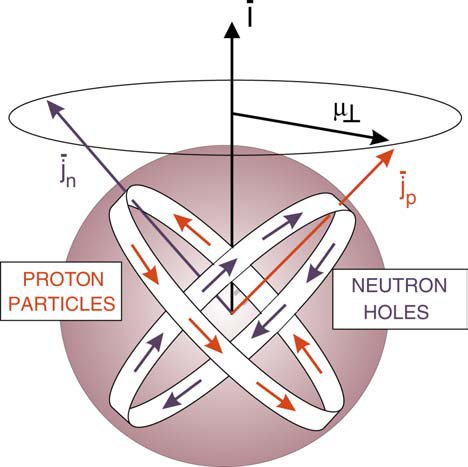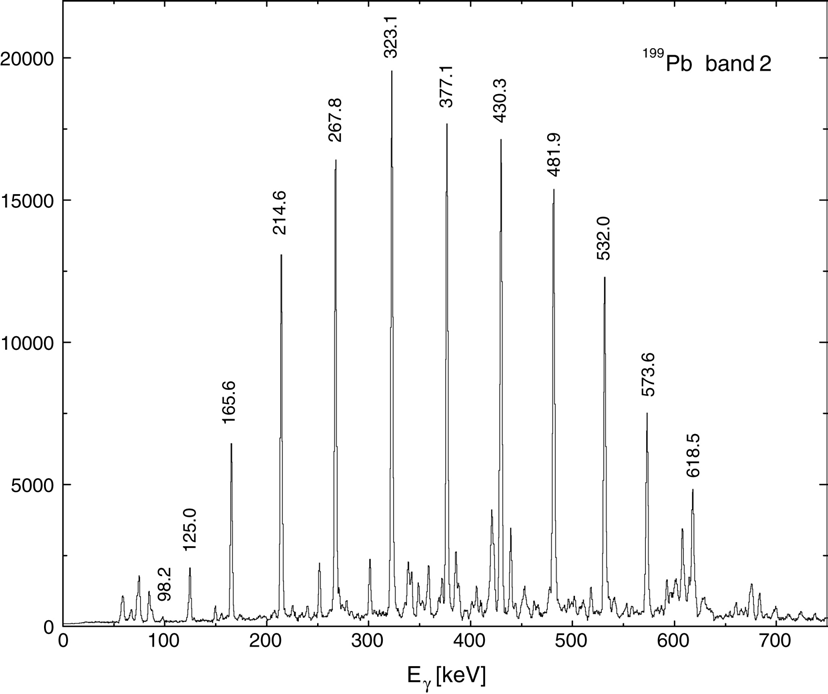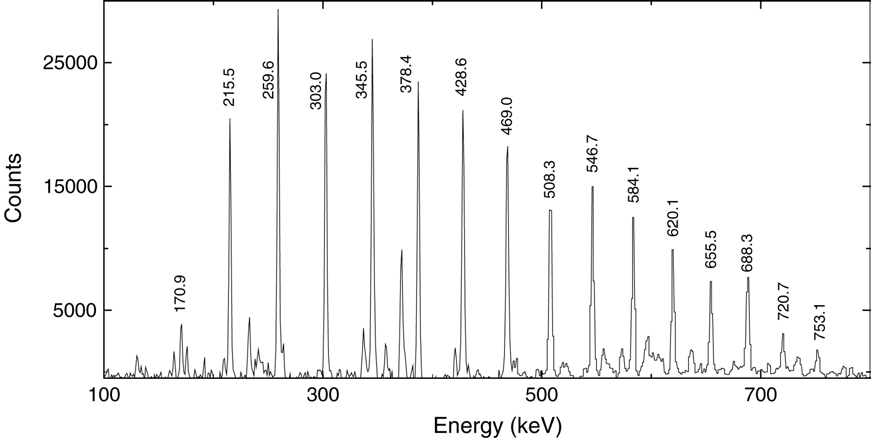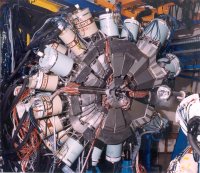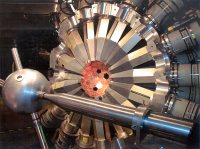Research
Atomic nuclei are mesoscopic systems, dominated by an interplay of microscopic and macroscopic behaviour. Accordingly, their properties are described within the framework of very different models, e.g. by the shell model, emphasising the microscopic structure, or the liquid drop model, explaining macroscopic behaviour.
We are investigating details of nuclear structure by bringing nuclei into extreme states using nuclear reactions with stable and radioactive heavy-ion beams. In such reactions nuclei can be excited into states with very high excitation energy, angular momentum (spin), deformation or isospin.
At very high angular momentum the interplay between the pairing and Coriolis interactions can be studied. Nucleons are excited into various orbitals and, for deformed nuclei, rotational bands are built on different excited states. Deformation may change as a function of angular momentum, which in term influences the rotational properties [see Publications].
In recent years we have discovered a new and unexpected mode of excitation at high spin: the occurrence of rotational-like bands in near-spherical nuclei. For rotational bands to occur, the symmetry of the quantum mechanical system must be broken. The long known rotational bands in deformed nuclei are good examples. We have found cases where the symmetry of spherical nuclei is broken by anisotropic currents - and the associated magnetic moments - of a few high-spin nucleons, see Fig.1. This type of excitation which leads to bands of strongly enhanced magnetic dipole transitions, see Fig.2, has been named 'Magnetic Rotation' [see H. Hübel, Prog.Part.Nucl.Phys. 54, 1 (2005)].
In different ranges of excitation energy and spin the occupation of certain nuclear orbitals can drive the nuclear shape to extreme values. We have recently studied triaxiality, super- and hyperdeformation.
Triaxiality had been predicted theoretically for a long time, but it has been difficult to prove experimentally. This is a shape where all three major nuclear axes are different. We have recently found unique evidence for triaxiality by the discovery of the 'Wobbling Mode' in several Lu isotopes. The fingerprint for wobbling are families of rotational bands which differ only by the tilt angle of the collective angular momentum with respect to the nuclear shape and which are connected by unusually strong inter-band transitions [see P. Bringel et al., Eur. Phys. J. A 24, 167 (2005)].
Very elongated shapes, where the nuclear axis ratios c:a approach 2:1 and 3:1, have been called super- and hyperdeformed, respectively. We have been studied a number of nuclei which show superdeformation in various mass regions and have determined their quadrupole moments. As an example for a superdeformed rotational band, see Fig.3 [see A.K. Singh et al., Nucl. Phys. A 707, 3 (2002)].
The theoretically predicted hyperdeformation at very high spins is difficult to find. So far, our experiments to search for discrete-line rotational bands of such extremely elongated nuclei produced no convincing results. Weak hints for hyperdeformation have been found in continuum gamma-ray correlation spectra [see Publications].
The investigations mentioned above have been performed with large multi-detector spectrometers, in recent years mainly with the EUROBALL and GAMMASPHERE arrays, see Fig.4 and Fig.5, respectively. These instruments allow to study very weakly populated structures in nuclei, down to about 10-5 of a reaction channel. A big step forward is expected in the future when spectrometers with even higher efficiency, AGATA in Europe and GRETA in the USA, become operational.
Nuclei far off the valley of stability have become more accessible recently via reactions with radioactive beams. For such nuclei with large isospin shell model calculations predict a modification of shell and subshell closures. This is an important question to be investigated experimentally since shell effects greatly influence nuclear properties. We have measured reduced transition probabilities to the first excited 2+ states in radioactive 56Cr and 58Cr by relativistic Coulomb excitation using the FRS-RISING setup at GSI, see Fig.6.
The results show that the 2+ state in 56Cr with neutron number N=32 is less collective than its neighbours. This is evidence for a new subshell closure [see A. Bürger et al., Phys. Lett. B, submitted (2005)].
Electron Spectroscopy
From January 23 to 24 2003 there was a Mini-Workshop on Future In-Beam Conversion-Electron Spectroscopy here at the HISKP.
The talks held for this workshop are available for download (PDF format, files up to 4 MB): Piotr Bednarczyk, Alexander Bürger, Andreas Görgen, Paul Greenless, Yves LeCoz, Witold Meczynski, Edgar Mergel, Macin Palacz, Costel Petrache, Peter Thirolf. The list of participants and the program are also available in PDF format.


